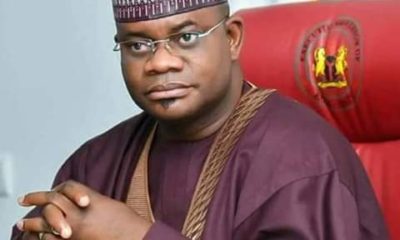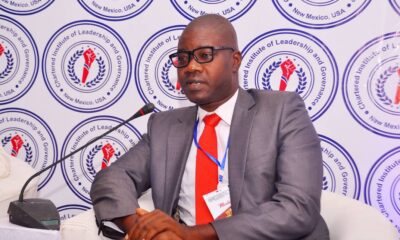Economic Issues
Deconstructing Nigeria’s Fiscal and Currency Crises -By Sa’ad Jijji


Sa’ad Jijji
Nigeria’s current economic difficulties are a combination of two related but separate crises. Our fiscal crisis, fueled by our dependence on crude oil prices, which has led to a reduction in federally shared revenues from a high of N1.5 trillion in July, 2011 to a low of N306 billion in April, 2016. This massive contraction in revenues has resulted in the non-payment of salaries and reduction in government spending, leading to slower economic activities and eventual recession. On the other hand, our currency crisis was partly created by the monetary policy choices we made starting from 2011. In a bid to attract and retain Foreign Portfolio Investments (PFIs), our monetary authorities committed a taboo in international finance through the Impossible Trinity. Our attempt at juggling independent monetary policy, free movement of capital and fixed exchange rate (together called the Trilemma) has been postulated by economic theories and proven by practical experience from the Asian financial crisis of the 1990s to inevitably lead to a currency crisis. And this is exactly what we got. I will make the argument here that a fall in oil prices need not lead to both fiscal and currency crises. It is not inevitable that both occur at the same time, as it did not happen in Nigeria in 2008/2009. I do not set out to apportion blames, as there are enough of that going round already. My aim is to draw the attention of our fiscal and monetary authorities to the lessons we can learn and how to avoid such errors in the future.
In Nigeria, we operate a system where every month proceeds from our sales of crude oil, gas, royalties and taxes received in dollars are converted into naira by CBN on behalf of the Accountant General of the Federation and shared, together with VAT collections from FIRS, to all the three tiers of government in a mid-month ritual we call FAAC Allocation. These dollars, after their conversion by CBN, essentially become CBN assets and cannot be claimed by any tier of government. CBN in turn sells these dollars to importers to get the naira to use for the next monthly ritual. When CBN sells fewer dollars to importers than it bought from the government, its reserves grow.
Recently, another major source of dollar inflow into the Nigerian financial system is from foreign investors who bring in dollars that are exchanged for naira at the FX interbank market. These investors get issued a Certificate of Capital Importation (CCI) which gives them the ability to buy back their dollars when leaving the country. While our governments are responsible for the management of the excess crude account and federal reserves, CBN is responsible for managing the much bigger reserve that bears its name.
To appreciate why our monetary policy choices have contributed to our current currency crisis, you have to go back to October 2011. At an emergency meeting of the Monetary Policy Committee (MPC) of CBN on October 10, 2011, a decision was taken to raise the benchmark Monetary Policy Rate (MPR) by 275 basis points from 9.25 percent to 12 percent. This was in response to the massive injection of liquidity primarily caused by the activities of AMCON (on one Friday AMCON injected close to N700 billion in fresh money to acquire the then troubled nationalised bridge banks, Afribank, Spring and Bank PHB). This substantial increase in interest rates at a time of high oil prices attracted many foreign portfolio managers to Nigeria’s sovereign fixed income instruments. By 2012, a report by the consulting firm, Ernst & Young, had Nigeria as the biggest recipient of foreign investment in Africa. In a report issued for the second quarter of 2014, the Nigerian Bureau of Statistics (NBS) reported that 84.7 percent of these foreign funds were invested in shares, bonds and treasury bills that could be easily sold. CBN got caught in the excitement of this inflow that it relaxed time restrictions on capital flow to Nigeria, which was set up to mitigate the adverse effects of such flows (before 2011, foreign investors were not allowed to invest in Treasury Bills with less than a one year tenure). CBN even toyed with the idea of selling forward contracts to these investors. We took further steps to meet the requirements for joining the JP Morgan Bond Index all in a bid to attract and retain portfolio flows.
In international finance, the Mundell–Fleming Trilemma (Impossible Trinity) posits that a country should not try to maintain a fixed exchange rate (as CBN was doing at N150/$), have an independent monetary policy (as was done with the MPR) and still allow free movement of capital (as CBN vigorously encouraged). A country that attempts to do all three at the same time makes its currency susceptible to a major crisis at the slightest trigger. This was amply demonstrated by the Mexican Peso crisis of 1994 and the financial turmoil in Thailand during Asian financial crisis of 1997. Nigeria’s exceptionalism was on test. By 2013, the clouds were gathering in Nigeria.
To understand how pervasive this inflow of portfolio investment was in Nigeria, you have to consider a CBN report issued in January 2015 titled, “Determination of the Optimal Foreign Exchange Reserves for Nigeria.” After reviewing the various recommendations on how to determine the optimal level of reserves for a country, including but not limited to 20 percent to 30 percent of Broad Money supply (M2) to four to seven months of import cover, the report recommended that the optimal reserves that Nigeria should hold is a minimum of $32 billion in ‘core reserves’ to enable the country withstand external shock of the kind we are currently experiencing. At the time of writing that report, the ‘external reserves’ of Nigeria was $39 billion. However, the report went further to make its most important point: “Given that the current level of external reserves is about US$39 billion; out of which US$20 billion constitute foreign portfolio investments, it is imperative to build core reserves from the current level of US$19 billion to the derived minimum level of US$32 billion…” In layman terms, the CBN study was saying 51 percent of our external reserves did not actually belong to us. This acknowledgement by CBN that the bulk of our external reserves was essentially a deposit we were holding in trust for foreign investors should have sent red flags to the relevant authorities. To make matters worse, CBN generously used these same reserves to ‘defend the naira’ through massive interventions in the FX market and the now defunct practice of BDC FX allocations to more than 3,000 BDC operators.
How disruptive are portfolio investments to the economies of developing countries? A June 2016 IMF study titled, “Neoliberalism – Oversold?” published on the organisation’s website reviewed this question and concluded that, “Some capital inflows, such as foreign direct investment—which may include a transfer of technology or human capital—do seem to boost long-term growth. But the impact of other flows—such as portfolio investment and banking and especially hot, or speculative, debt inflows—seem neither to boost growth nor allow the country to better share risks with its trading partners..although growth benefits are uncertain, costs in terms of increased economic volatility and crisis frequency seem more evident. Since 1980, there have been about 150 episodes of surges in capital inflows in more than 50 emerging market economies, about 20 percent of the time, these episodes end in a financial crisis…”, the report concluded.
Economists are more renowned for predicting the past. However, both our fiscal and monetary authorities should have seen that the rise in crude oil prices from 2009, after the financial crisis, was essentially driven by the Quantitative Easing (QE) programme of the Federal Reserve Bank of America. The Fed’s programme essentially flooded the global economy with cheap dollars which expectedly inflated both equity and commodity prices. The gradual winding down of the QE programme (Tapering as finance people call it) announced in 2013 and the prospect of the Fed raising interest rates should have sent alarm bells to Nigeria’s fiscal and monetary authorities of a forthcoming correction in crude oil prices. The time-tested inverse relationship between the strength of the dollar and price of crude oil was about to play out. We should have seen that over 50 percent of our reserves was at risk of leaving the system. Even by CBN numbers, over 40 percent of our current FX demand in Nigeria is accounted for by ‘Financial Services’ which is mainly a euphemism for investors taking back their dollars. The panic reaction of CBN at such massive outflows must have convinced the remaining portfolio investors to also try and get back their dollars. This rush to exit by portfolio investors, more than anything else, is the major reason for the crisis that the naira is facing.
What Can We Do Differently?
In fairness to our monetary authorities, they saw the danger maybe a little late. Nigeria’s Broad Money supply (M2), a measure of total liquidity in the financial system, which was around N5 trillion in 2008, was approaching N20 trillion in 2015. This massive expansion was caused primarily by three factors. The activities of AMCOM (it had injected close to N6 trillion in bonds), increased and continued monetisation of crude oil earnings by government and the conversion of these portfolio flows from dollars to naira. Typically, a country facing increased domestic money supply from portfolio flows has four tools to choose from; Flexible Exchange Rate, Capital Controls, Fiscal Retrenchment or Sterilisation. By 2013, our monetary authorities had unwisely committed not to do the first two. Fiscal retrenchment requires the government to cut down its spending to allow room for the naira flows coming from portfolio investors. Sadly, the lack of harmony between our fiscal and monetary policies meant that both were operating in silos. CBN resorted to the last option – Sterilisation. Initially, CBN placed more emphasis on its Open Market Operations (OMO) by which it offered attractive rates on special treasury bills to mop up excess liquidity in the system. However, not only is this process expensive to CBN, it also had the adverse effect of raising interest rates for every other player, including the government, and more crucially further attracting more portfolio flows. Eventually, CBN resorted to major increases in Cash Reserve Ratios (CRR) for banks, a crude method of sterilisation. In spite of what some Lagos bankers may think, this method was not done aggressively enough to the problem at hand.
The common saying is that when you are already in a hole is you should stop digging. CBN/MPC’s recent decision to raise interest rates by two percent with the explicit aim as stated in the MPC communique to attract Foreign Portfolio Investors back to Nigeria should be done with caution. This is just ‘kicking the can’. This move by CBN essentially confirms what one member of the MPC (the only one who voted against the October 2011 hike) has been saying in his individual comments that Nigeria has found itself in a “high interest trap”. Monetary authorities cannot reduce interest rates to boost the domestic economy because of their fear that portfolio investors will leave the system, reduce our reserves and drown the naira. Essentially, Foreign Portfolio Investments in Nigeria have become a dollar debt whose high interest rate is paid in naira and lost economic growth.
If CBN must attract back Foreign Portfolio Investors (PFI) as a short term major for supporting the local currency, I suggest the following. First, our reserve management system should be changed. CBN should follow its own advice and separate our ‘core reserves’ from the general reserves by making allowance for these portfolio flows. We should then aim to build the targeted $32 billion “core reserves”. Second, CBN should further rein in the current practice of Nigerian banks borrowing abroad in dollars. The current prudential guidelines that set the limit at 75 percent of shareholder funds has to come down and remain down. Third, the Federal Government should seek constitutional amendments to legalise the Excess Crude Account. The irony in the story often told about a former state governor who when told by a former president years ago of the need to save for a rainy day, peeped at the window and told the president that it was already raining, should not be lost on us. By now, we should all know what a real ‘rainy day’ looks like. The fact that the balance in our ‘Excess crude’ account has risen from $2.2 billion in April 2016 to almost $4 billion in July, 2016 in spite of salary backlogs is mainly due to the ‘body language’ of the president. Fourth, CBN should consider reintroducing restriction on the minimum time limit that portfolio investors must stay within Nigeria’s financial space in spite of what Article 8 of IMF’s charter says. Free movement of capital from speculative traders in a commodity price driven economy tends to over-strengthen the naira during good times and over-weaken the naira during bad times. The IMF study I referenced above also suggested that “……Among policymakers today, there is increased acceptance of controls to limit short-term debt flows that are viewed as likely to lead to—or compound—a financial crisis. While not the only tool available—exchange rate and financial policies can also help—capital controls are a viable, and sometimes the only option…”
Finally, I suggest a more robust coordination between our fiscal authorities (the government) and our monetary authorities (MPC/CBN). A semi-annual retreat where the overall direction of both monetary and fiscal policies are discussed should by now be a normal practice. That CBN is seeking new portfolio flows at a time the government is implementing an expansionary budget seems odd. In the US, the Federal Reserve Bank receives its objectives from the United States Congress and to which the Chair of the Fed is required to make semi-annual testimonies (Section 8 of the CBN Act 2007 actually requires CBN to make similar semi-annual presentation to NASS). Our Central Bank’s narrow focus on its mandate of price stability as enshrined in the CBN Act has led to the abnormality of CBN raising rates while Nigeria is in a recession. An amendment to Section 2 of the CBN Act to expand its objectives to include employment generation may be useful.
Although there are no easy answers in macro-economic policy that works all the time for all nations, Nigeria can increase its odds in the global space if it learns from its past and those of others. As for those obsessed with the idea of CBN autonomy, I associate with the analogy given by a famous Lagos based economist. His view is that CBN has the autonomy and independence of an airplane pilot. The pilot can decide on several important issues like altitude and managing turbulence but the ultimate decision of where the plane is going is that of the passengers or their representatives.
Sa’ad Jijji, who holds degrees from Ahmadu Bello University, Zaria and University of Oxford, works in a Lagoos-based financial services company and can be reached through sukayel@yahoo.com.



















